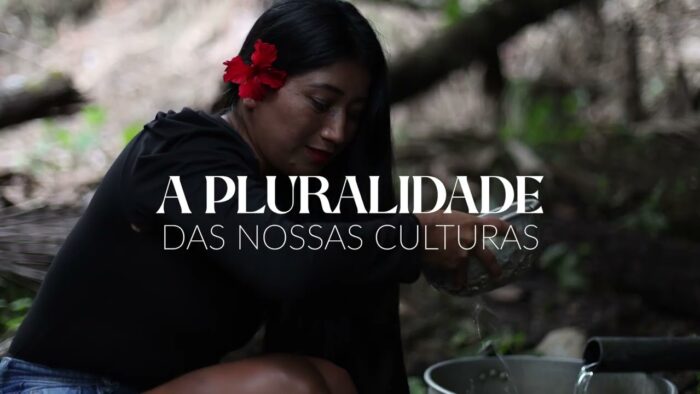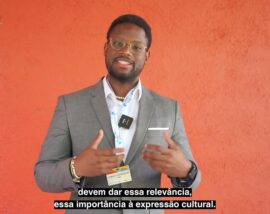World Bank Bonds to Provide $360 Million in Catastrophe Protection for Mexico
Washington, DC, August 4, 2017 – The World Bank (International Bank for Reconstruction and Development, or IBRD) issued catastrophe bonds that will provide Mexico with financial protection of up to $360 million against losses from earthquakes and tropical cyclones. Mexico is one of the world’s most vulnerable countries to natural disasters. Nearly one third of its population lives in areas that are exposed to hurricanes, storms, floods, earthquakes, and volcanic eruptions. In economic terms, this translates into 71 percent of the country’s GDP considered to be at risk from two or more natural hazards. The bonds were issued in three different structures to provide coverage against three types of disasters: earthquakes, Atlantic tropical cyclones, and Pacific tropical cyclones. If a natural disaster occurs that is eligible for coverage, some or all of the bond proceeds will be made available to the Mexican Fund for Natural Disasters, or FONDEN. Payouts will be triggered when the earthquake or tropical cyclone meet the parametric criteria for location and severity set forth in the bond terms. The payouts will be passed on by IBRD to FONDEN through the intermediation of Münchener Rückversicherungs-Gesellschaft Aktiengesellschaft (Munich Re), a German reinsurance company, and Agroasemex, S.A., a Mexican state-owned insurance company. GC Securities, a division of MMC Securities LLC is the sole book runner for the transaction. GC Securities and Munich Re acted as joint structuring agents. GC Securities and Munich Re Capital Markets GmbH, a wholly owned affiliate of Munich Re, acted as joint managers. The bonds were issued under IBRD’s “capital at risk” notes program, created in 2014. One of the purposes of this program is to transfer risks related to natural disasters or pandemics from developing countries to the capital markets. Bonds issued under this program offer investors a different risk/return profile than regular IBRD bonds since investors may lose part or all of their investment. In 2006, Mexico became the first sovereign to issue catastrophe bonds. Mexico issued additional catastrophe bonds in 2009 and 2012 using the World Bank’s MultiCat Program. The MultiCat Program helps countries issue catastrophe bonds to insure themselves against the risk of natural disasters. In the framework of the MultiCat Program, the World Bank acts as arranger; assists in formulating disaster risk management policy; offers off-the-shelf documentation; supports preparation of legal and operational framework; and selects service providers. Arunma Oteh, the World Bank’s Vice President and Treasurer, said: “The World Bank bonds we have launched today are not only a financial innovation—but also a milestone in our partnership with Mexico, and in our joint pursuit of preventing the human and financial tolls of earthquakes and floods. We are leveraging Mexico’s leadership in developing risk insurance mechanisms against natural disasters, and the World Bank’s innovative use of private-sector instruments to transfer risk to the capital markets, so that together we can deliver innovative financial solutions that help eradicate poverty and boost shared prosperity.” Gerardo Corrochano, the World Bank’s Country Director for Mexico and Colombia said: "Today’s transaction marks another step in the evolution of the relationship between Mexico and the World Bank in the area of catastrophe risk. Mexico is one of the most experienced governments in catastrophe risk management. An in depth understanding of the risks has allowed the Mexican government to successfully access international reinsurance and capital markets to transfer specific risks. Building disaster resilience is essential, not only for reducing the risks and impacts from natural hazards but for protecting the most vulnerable." Oscar Vela, Head of Insurance, Pensions and Social Security at Mexico’s Ministry of Finance, said: “Over the past 10 years, Mexico has built and expanded a long term strategy for catastrophic risk management. This policy has the key objective of creating financial mechanisms to mitigate and stabilize the impact of natural disasters on fiscal accounts. The issuance of the catastrophe bonds—the result of a partnership among key public and private sector institutions—renews the solid financial shield to FONDEN, and helps to further strengthen the set of macroprudential policies used by our Ministry of Finance. The Mexican government remains committed to promoting policies that transfer risk to the capital markets, so that we can jointly create deeper markets and better diversification opportunities, foster better fiscal policy management, and support socially responsible initiatives.” The World Bank has accessed the capital markets for its member countries since it issued its first bond on July 15, 1947. The World Bank is also a leader in the catastrophe risk market: in the past ten years it has executed approximately $2.5 billion in catastrophe risk transactions. World Bank Catastrophe Bonds Investor Distribution Geographic distribution Investor type Class A notes Asia Pacific 8% Ded. ILS 78% Bermuda 23% Reinsurer 2% North America 24% Asset Manager 19% Western Europe 45% Class B Notes Asia Pacific 9% Ded. ILS 69% Bermuda 16% Life Insurer 3% North America 38% Reinsurer 4% Western Europe 37% Asset Manager 24% Class C Notes Asia Pacific 7% Ded. ILS 60% Bermuda 22% Life Insurer 1% North America 25% Reinsurer 16% Western Europe 46% Asset Manager 23% World Bank Catastrophe Bonds Summary Terms and Conditions*Type of Note CAR 113 – Class A CAR 114 – Class B CAR 115 – Class C Issuer International Bank for Reconstruction and Development International Bank for Reconstruction and Development International Bank for Reconstruction and Development Trade Date July 24, 2017 July 24, 2017 July 24, 2017 Issue Size USD 150 million USD 100 million USD 110 million Settlement Date August 4, 2017 August 4, 2017 August 4, 2017 Scheduled Maturity Date August 11, 2020, subject to extension and to early mandatory redemption December 20, 2019, subject to extension and to early mandatory redemption December 20, 2019, subject to extension and to early mandatory redemption Issue Price 100% 100% 100% Bond Coupon (per annum) 6-Month USD Libor+4.12% (subject to a minimum rate of interest equal to the Risk Margin) 6-Month USD Libor+8.92% (subject to a minimum rate of interest equal to the Risk Margin) 6-Month USD Libor+5.52% (subject to a minimum rate of interest equal to the Risk Margin) Risk Margin 4.50% 9.30% 5.90% Covered Perils Earthquake Event Atlantic Named Storm Event Pacific Named Storm Event Redemption Amount The Notes will not be fully repaid if an event occurs The Notes will not be fully repaid if an event occurs The Notes will not be fully repaid if an event occurs (*) Any offer of the bonds described herein will solely take place on the basis of the relevant offering documentation including but not limited to the Prospectus, Supplemental Prospectus and Final Terms prepared by the World Bank or on behalf of the World Bank. Any decision to invest in the bonds should be taken on the basis of the relevant offering documentation in which the risks, expenses and relevant offering restrictions with regard to the bonds are described. In the event of any discrepancy between the information set forth herein and the information in the relevant offering documentation, the contents of the relevant offering documentation shall prevail. ________________________________________________________________________________ About the World Bank The World Bank (International Bank for Reconstruction and Development, IBRD), rated Aaa/AAA (Moody’s/S&P), is an international organization created in 1944 and the original member of the World Bank Group. It operates as a global development cooperative owned by 189 nations. It provides its members with financing, expertise and coordination services so they can achieve equitable and sustainable economic growth in their national economies and find effective solutions to pressing regional and global economic and environmental problems. The World Bank has two main goals: to end extreme poverty and promote shared prosperity. It seeks to achieve them primarily by providing loans, risk management products, and expertise on development-related disciplines to its borrowing member government clients in middle-income countries and other creditworthy countries, and by coordinating responses to regional and global challenges. It has been issuing sustainable development bonds in the international capital markets for 70 years to fund its activities that achieve a positive impact. Information on World Bank bonds for investors is available on the World Bank Treasury website: www.worldbank.org/debtsecurities


